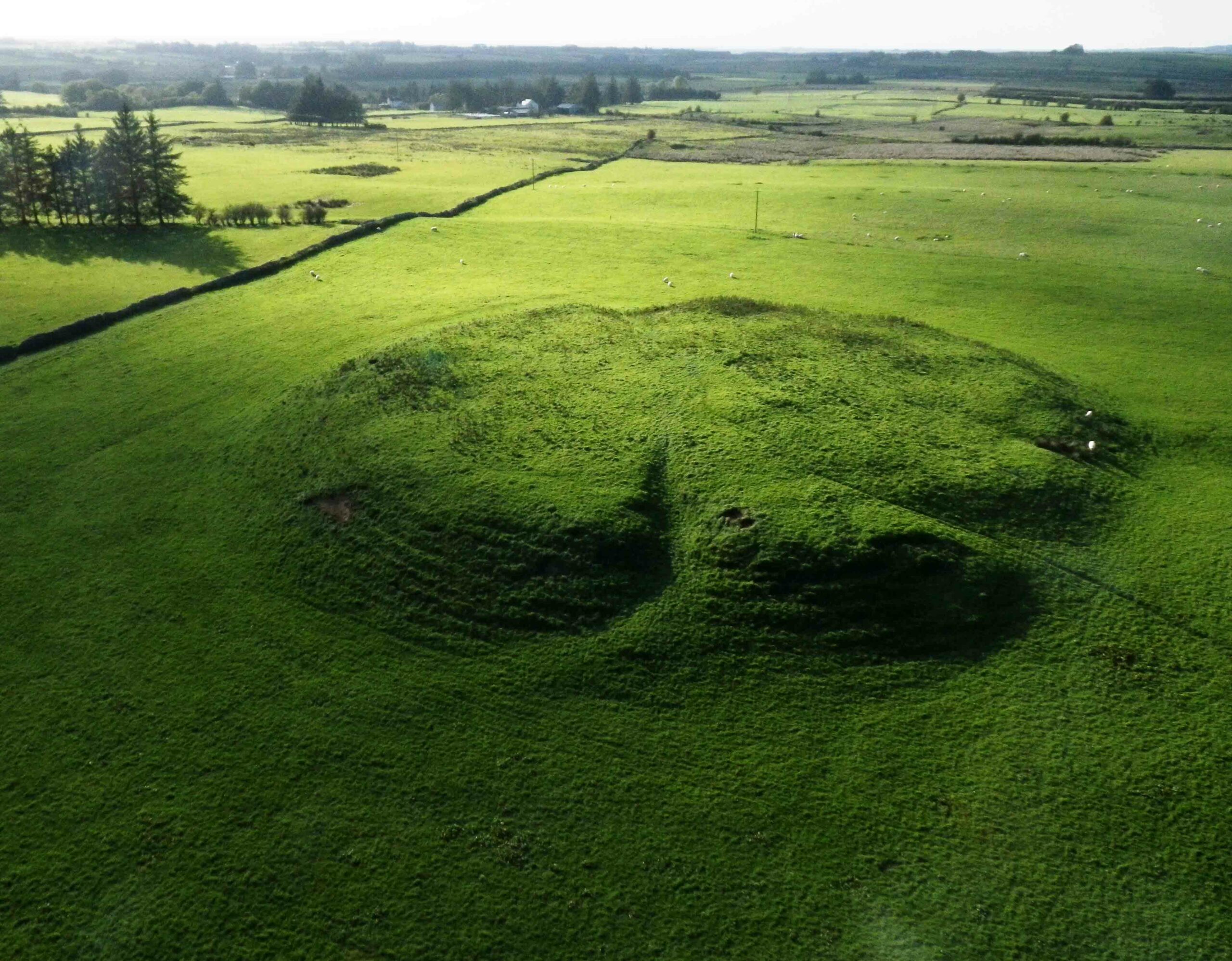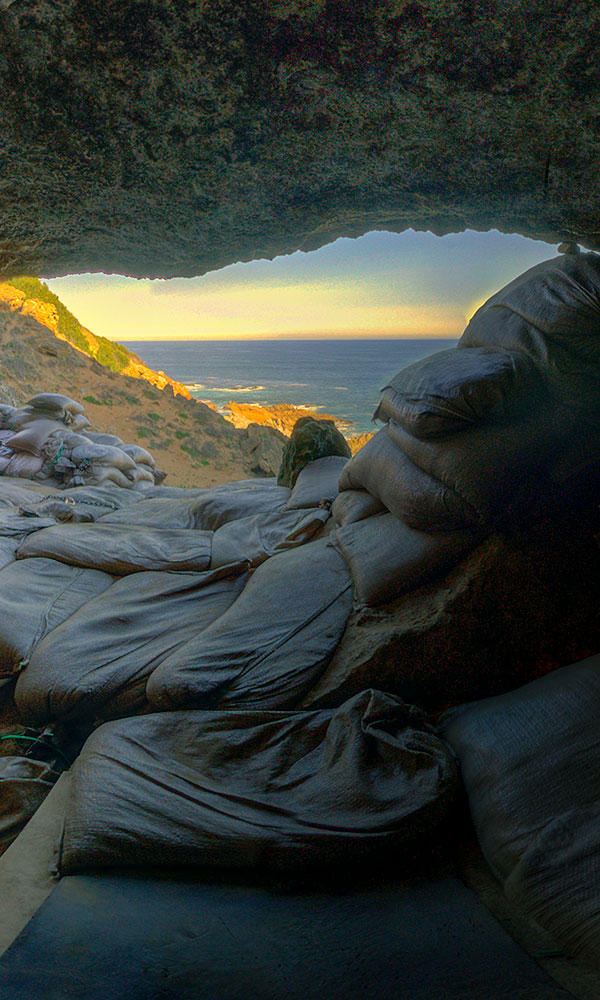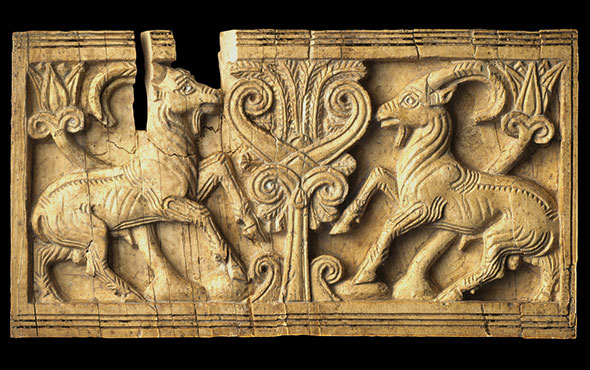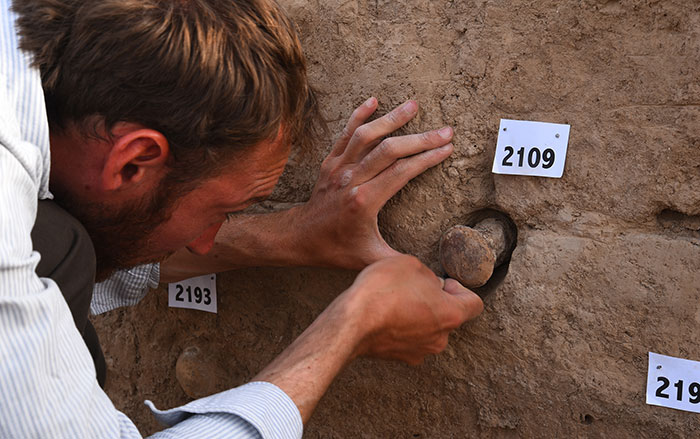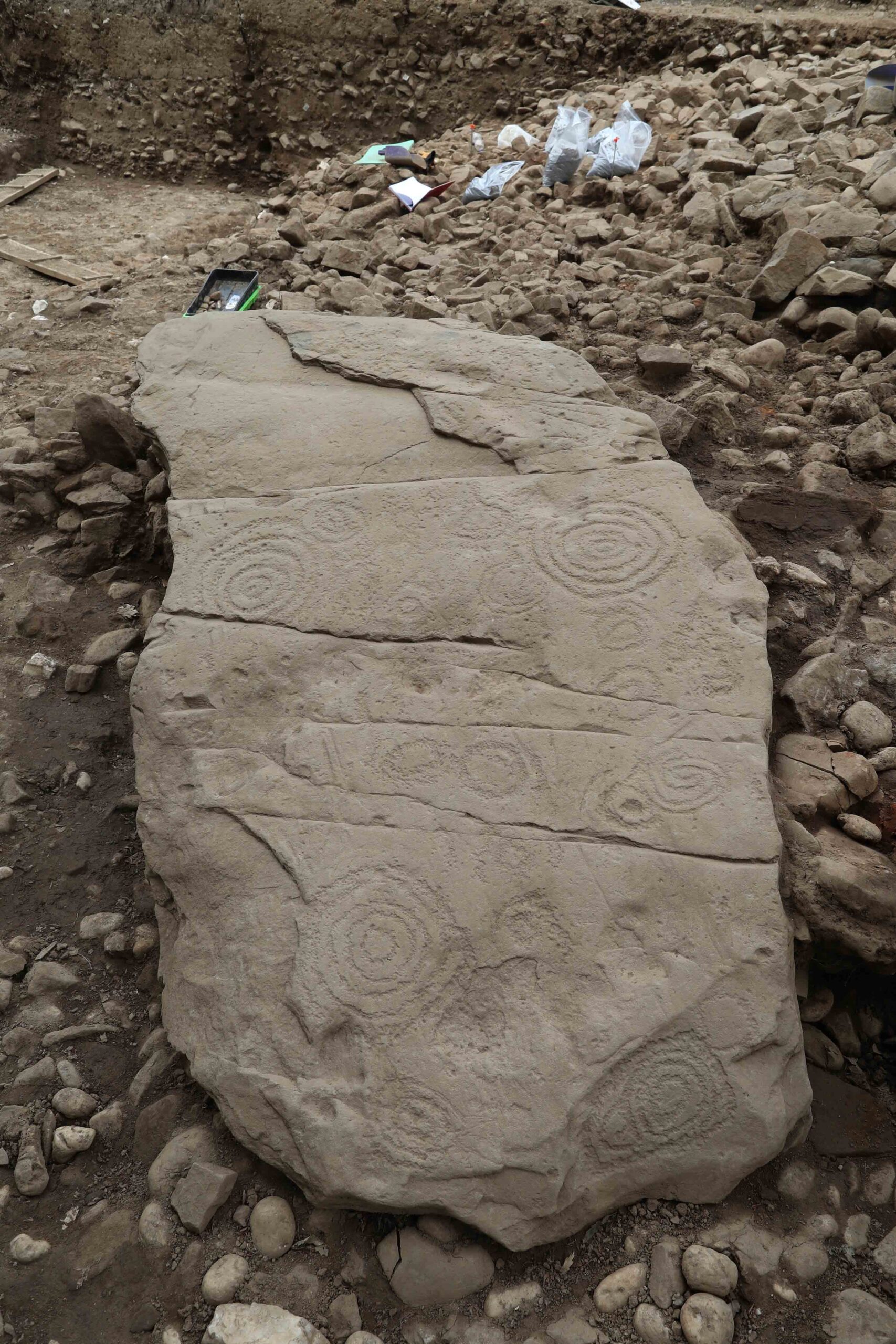
A monument that may lead to a shift in scholars’ vision of Ireland’s prehistoric past has been discovered in the Boyne Valley north of Dublin. The 5,500-year-old passage tomb—a complex of multiple burials—is thought to be one of the oldest ever discovered in the area, which is renowned for its concentration of Neolithic sites. One of the stones that once covered the tomb is especially well carved. The tomb’s relatively small size suggests that it was constructed earlier than other tombs in the valley, says archaeologist Stephen Davis of University College Dublin. It may date closer to when people first began farming in the region, around 3800 B.C. “The tomb seems to mark a transition towards a time when religion played a greater role in people’s lives,” he says. To some extent, suggests Davis, the free time to build such monuments must have been the result of an agricultural surplus.



